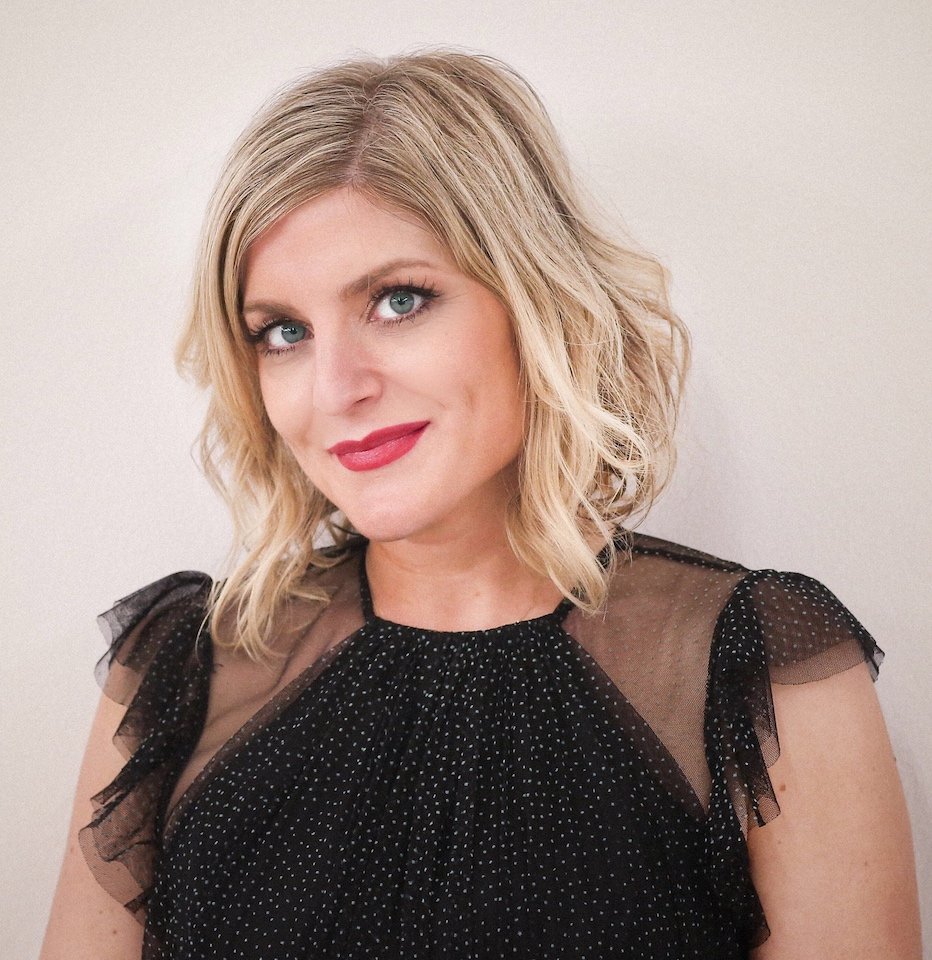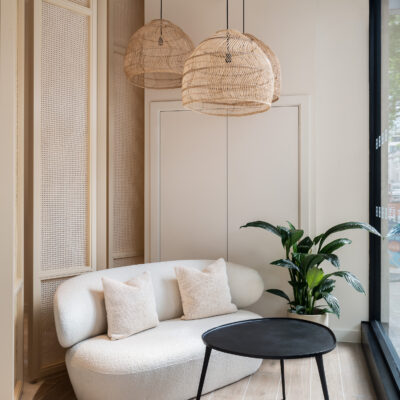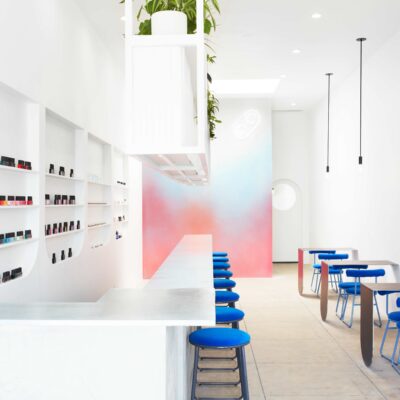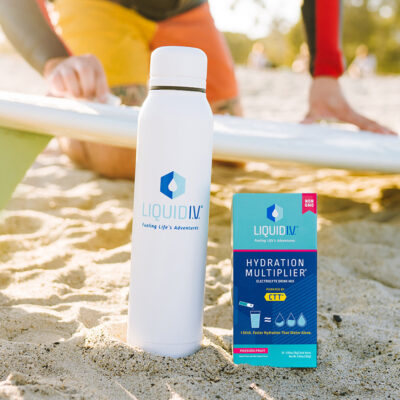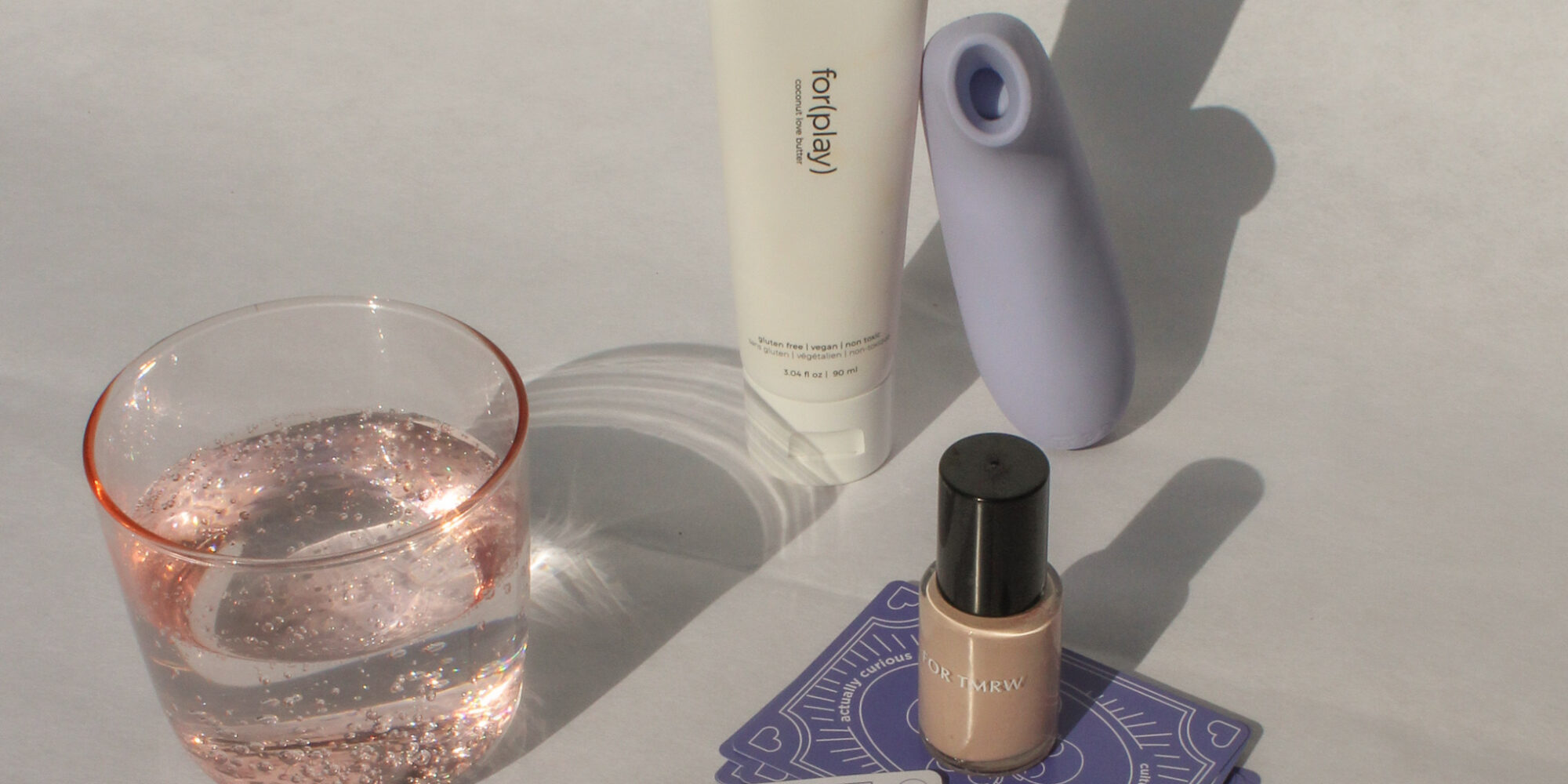
“The Lululemon Of Pleasure”: E-Tailer The Lake Focuses On Sexual Wellness As Part Of Consumers’ Daily Lives
When The Lake launched in 2019, married co-founders Bren and Philippe Gauthier tried to come out of the gate with a strong public relations strategy in Canada and the United States to promote the Toronto-based lifestyle e-tailer’s unique selection of sex toys, which they call B.E.D. for body exploration devices, intimate wear or loungerie, candles, ingestible wellness items, DIY pottery kits and more. “We thought, ‘Hey, this is different,'” says Bren. “Nobody is carrying these products together, and here’s a puzzle and a vibrator in the same cart.”
Unfortunately, the press wasn’t very taken with the story—and the comparatively extensive coverage of retailers like Nordstrom, Bloomingdale’s and, most recently, Sephora adding sexual wellness to their offerings over the past year caused a bit of a sting. “It’s big news because it’s Sephora,” says Bren. “Obviously, it is a big deal. We’re too small right now to have it matter, but, two years ago, we tried to tell you about this.”
The momentary sting will pass, and The Lake should have plenty of opportunities for future press hits because the Gauthiers are in it for the long haul. Philippe hails from a legacy Canadian pleasure retail family. His father, Yvon Gauthier, pioneered the space in the 1970s with the elevated, boutique-style adult shop Seduction. Bren and Philippe have big plans for pioneering an elevated take on sexual wellness commerce, too. Beauty Independent spoke to the duo about the place of puzzles in pleasure, the impact of venture capital pouring into sexual wellness, launching a in-house loungerie line and more.
How does The Lake sell sexual wellness differently than other sex retailers?
Philippe: We wanted to bring [sexual wellness] into a shopping environment that people already feel comfortable in, that they recognize. What Sephora’s doing or Urban Outfitters or others, that’s where we were going with this. Then, with the pandemic, they all got on the train with us. It’s market validation for us, and where we differentiate ourself is it’s not an afterthought, it’s really the core of our business to promote mindfulness and wellness so that you feel good in your body and you’re able to explore your body.
A lot of other brands are still talking a lot about sex, sex, sex, but our approach is more about reconnecting with yourself. We want to guide people to connect with themselves first and then slowly explore, but remove all the social pressure. There’s a lot of social pressure when you go on the Instagram feed of a woman-led sex tech brand. It’s all going to be about sex. Then, it’s like, OK, should I be doing this? Should I be doing that? Should I be exploring this? It can be overwhelming for people. Our approach is to remove all of that and focus on finding little pleasurable moments in your day, and then reconnecting with yourself through daily pleasures.
Bren: Philippe brought to me the idea that the retailers have this product category wrong, like selling vibrators in a Best Buy-style, very male gaze, very utilitarian like, how hardcore is this orgasm going to be based on how much power? That’s what people are trained to expect. It’s all about these technical aspects when something beauty does so well is sell a vibe, sell a lifestyle, sell the benefits in a more subtle way.
We talked about what we need to do here. Is it just about making a pretty store that’s more chill where you can find the sexual wellness products? No, it’s just to have that product curation around the broader idea of pleasure as a lifestyle. We want to be the Lululemon of pleasure. We want to get people to look for pleasure throughout their day.
How does that approach inform the products you carry?
Bren: The products that we have brought in are very minimalist, just oils that have a sensory, sensual aspect to them. The categories we’re curated around explore different senses. There’s candles for scent, there’s oils for texture and touch, gua sha tools to slow down.
We also carry mindful pastimes. How are there ways where you can disconnect from your phone and do something that creates a bit of space for you to enjoy a really pleasurable moment in your day? So, knitting kits, embroidery kits, we’ve had puzzles since before the pandemic turned puzzles into the hottest thing in the world. We were the first brand in Canada to carry Piecework Puzzles, then they blew up. They were featured in The Strategist and The New York Times. We’ve just watched the whole category mix that we had planned out before the pandemic really take hold and people go, “Oh my gosh, I can create these moments of enjoyment and pleasure in my day.”
What we’re trying to establish is that, if you slow down and give yourself these little everyday pleasures, that’s going to heighten your awareness of what feels good, and that will translate to when you’re in a moment where you’re hoping to experience sexual pleasure, you’re more in tune with your body and you’re more in tune with your senses. That’s the reasoning behind the product mix. We’re hoping people layer their day with these everyday pleasures.
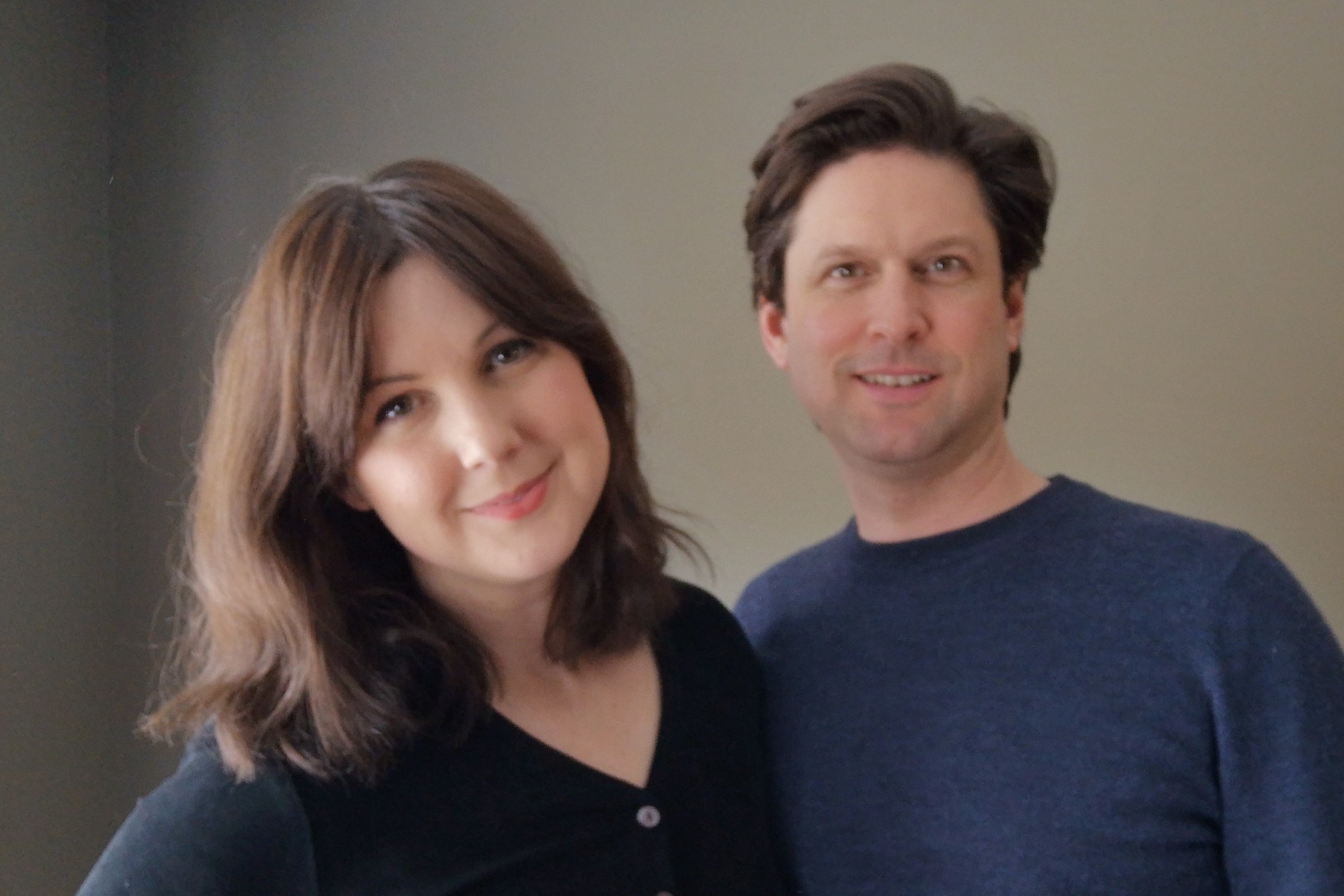
How does The Lake approach education differently?
Philippe: I’m sure that Sephora’s educational part of their sexual wellness will be a lot about like, how to achieve the best orgasm, how to use this very technical thing, like Cosmopolitan articles. Our educational piece is more about connecting with yourself, taking a moment, mental wellness and mindfulness—and no expectations.
Bren: We have emails from customers the day that they get their body exploration devices saying like, “This doesn’t work, what do I do?” I was like, “How much time did you give yourself?” I think that, if it’s your first device, you’re going, “Well, I watched ‘Sex in the City’ replays, The Rabbit is supposed to do something right away.” It’s just all these layered expectations.
You have to treat it as a quiet moment with yourself, and you’ll learn new things about yourself. You use it over your lunch break when you’re working from home because you just had a stressful call. It’s not about sex at all. At that point, it’s to destress, it’s giving yourself a moment of calm and a wave of release. We’re trying to broaden the perspective, broaden people’s understanding of what it could represent in your life.
We have the foundation of what we hope grows into this big retail juggernaut, that we go global. We want to have an impact, but it’s about giving yourself time without expectation time to reconnect and slow down. That’s why [sexual wellness] fits alongside doing a puzzle. And that’s why it fits alongside having a really beautiful tea, sitting and looking out the window, and creating these 5-minute moments. You don’t need to get out to the spa. You don’t need to go over the top.
I think, before the pandemic, the treat-yourself movement was very go out and splurge or travel or indulge in these very elaborate ways. COVID forced us all to plan a little bit smaller at how we can do nice things, but we’re so stressed. We’re so on the go, we’re so connected all the time. If we don’t build in little pleasures, you’re just cutting yourself off from your humanity.
What we’re trying to establish is that, if you slow down and give yourself these little everyday pleasures, that’s going to heighten your awareness of what feels good, and that will translate to when you’re in a moment where you’re hoping to experience sexual pleasure, you’re more in tune with your body and you’re more in tune with your senses.
Venture capital money has come into the sexual wellness space in a big way. Are there pros and cons?
Bren: We wonder, who’s steering it? Who are the VCs? It’s mostly men investing. After being 25 years in the industry, Phil’s seen it all. He’s seen all the different variations of like the more tech the toy has, it’s seen as more. But you see people trying to come into the market to do something different, then you can tell when money’s come into it, and they start getting pushed down the same old track.
Sephora launches with Maude and Dame, and we launched with Maude and Dame. It was very strategic why we picked these. They’re not in sex shops because the margins are terrible compared to other retail sex toy brands because they’re indie. They charge a lot at wholesale, and that’s why the sex shops that are used to like a 90% markup weren’t really jumping on board.
Philippe: It sort of muddles the message. A lot of the time it’s the early adopter who’s easiest to get on board on your social media, who’s going to interact with your account. So, people start creating content for people that are already sextroverted because they’ll follow a sex toy brand. Then, they create content for those people, and they end up forgetting about the people that are not sextroverted. It’s not their lifestyle. It’s not instinctive to them to follow a sex brand on their Instagram account.
Those customers are harder to get to follow you. That’s why a lot of people just turn their back to the sex industry. Brands have gotten their enthusiastic customers that already understand, that have had that conversation with themselves. They’re comfortable exploring, they’re excited by it or they’re into in it.
I’ve been really stubborn at keeping the messaging broad, and that’s created a slower growth for us on social media because some people will follow us and then they either realize, oh, we talked too much about sex. They unfollow. But it’s important for us to keep a female mindset for the brand. It’s not just turning on a switch and sex is on. A woman needs to feel safe to have sex and enjoy it. So, we need to create that safe environment for our followers.
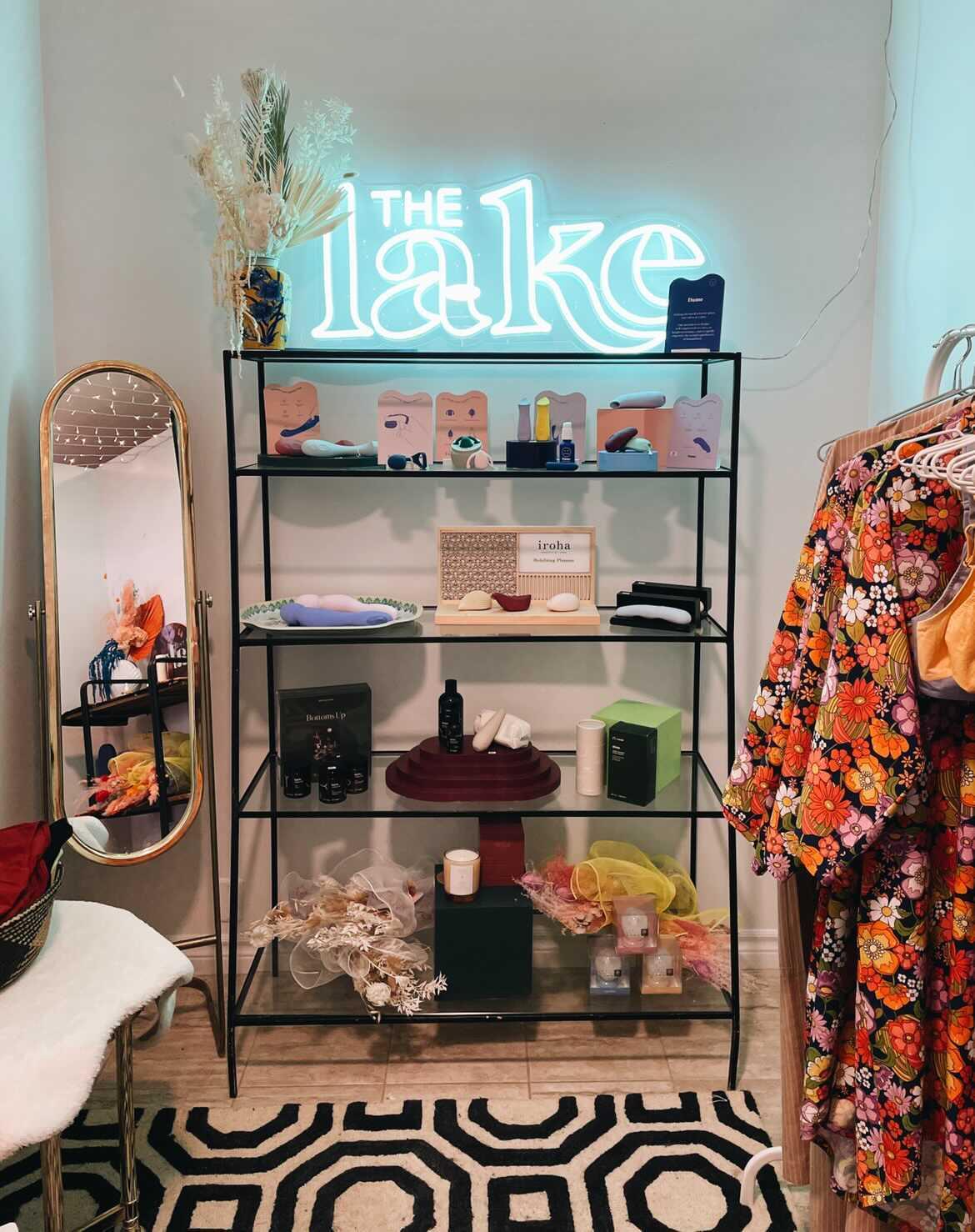
What some of The Lake’s bestsellers?
Bren: For the body exploration devices, Maude’s Vibe has done really well based on price point, personality and the versatility. You can use it externally and a little bit internally as well. It’s a good first-time device because it’s not as big of an investment. When you get to Dame, I would say Pom is the top seller for that brand. It’s really nicely designed to be used solo, but also with a partner, it fits really well between two bodies. It’s very intuitive. People love that product as well.
We love our carts. We love to watch people check out because it’ll be a puzzle, a vibrator, a scrunchie, a chocolate bar. You can see that someone’s like, “I want to have a nice weekend.” We do really well with the loungerie. We’re taking a similar approach to the underwear category as well. You think sex shop, you think lacy, uncomfortable underwear, but look how sexy these are? Everything’s high-waisted, cotton or tensile, very soft. The Nude Label sells really well, and it can still be aesthetically pleasing. We’re not talking about wearing your end of the week scruffy undies. Loungerie is our second bestselling category.
Our view starting off as this multi-brand retailer is kind of the opposite to how startups go about anything anymore. Usually, you start with the hero product, and then you build up the brand around that one product, and you go DTC and you really go hardcore on that. We didn’t see the problem as they’re not being products out there, we saw it as an environment problem. We just think that people need a different space to explore in.
So, as we see which categories do really well, our goal as we grow is to start doing our own in-house line of lingerie. That’s the direction that we want to go and making sure we’re thinking about size inclusivity, which has been really difficult for us, especially because we’re on the bralette side of things. We’ve been trying to go after some really beautiful brands, but they’re still sticking to the DTC model. So, I think the solution will be going in-house and doing that on our own.
Do you have an idea when that would happen?
Bren: We’re working on our pitch deck and working on getting our messaging in a place where we can go and speak to investors. We’ve been bootstrapping since 2019 without being able to go and do in-person pop-ups. We were going to do all these touch-and-feel events and grow the community that way, but it’s been quite a struggle building online, especially with Instagram and getting our ads shut down every five minutes for putting a beautiful photo of like Pom on a bedside table where you don’t even know it’s a vibrator, yet it’s being blocked. So, I don’t have a timeline, but as soon as we get some funding, that’s where it’s going first, developing that in-house line.
How much have you invested so far?
Bren: To date, we’ve bootstrapped and invested approximately $250,000 CAD [or nearly $197,000 at the current exchange rate] to launch the brand.
Is your customer base mostly Canadian?
Philippe: It’s mostly Canadian base because we wanted to keep our marketing dollars concentrated so that they reached the most amount of people in the market. Whenever we do turn on the tap to try and market to the U.S., we have a pretty good response. We have a really good response on the coasts.
Bren: Right now, the customer is probably like an 85% to 15% split. We offer a $9 flat fee shipping rate to the U.S. As we grow, we would love to get our 3PL set up in the U.S. so that we can really open that market up.
